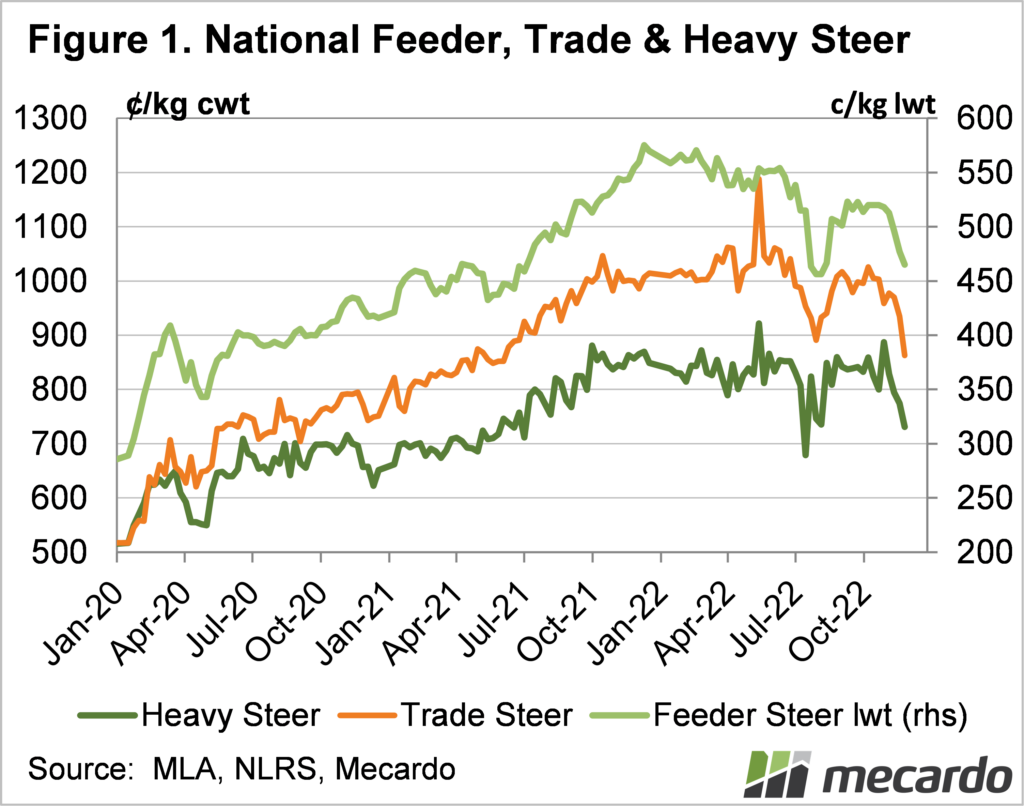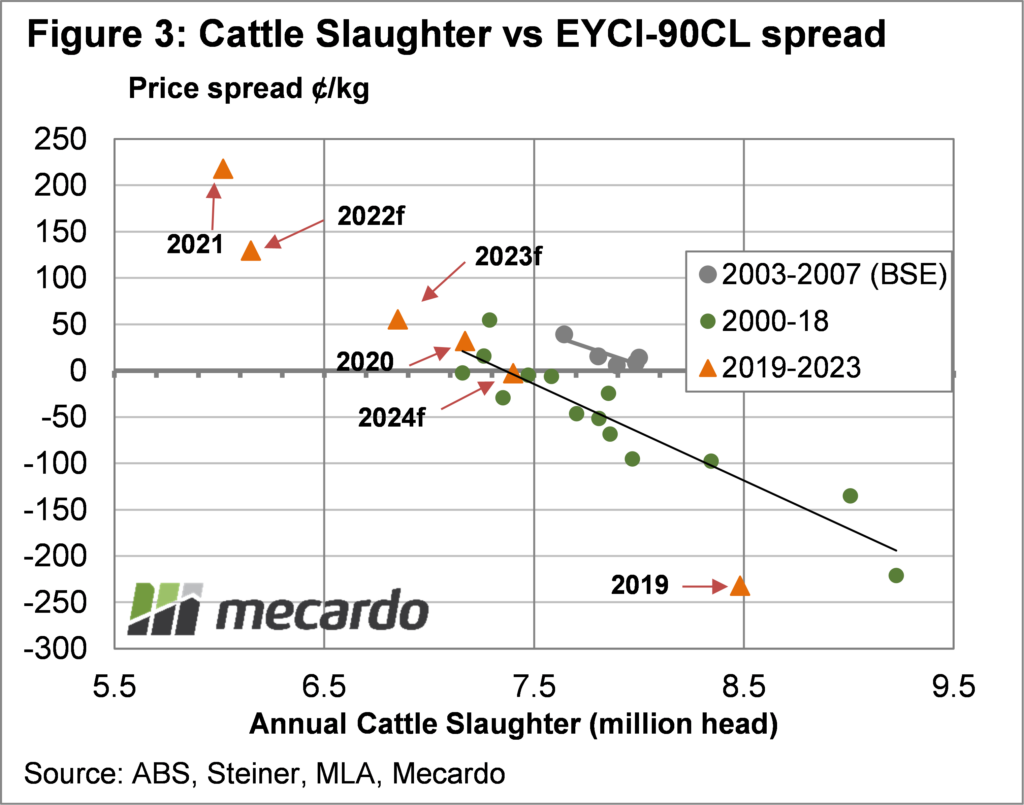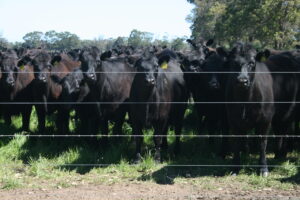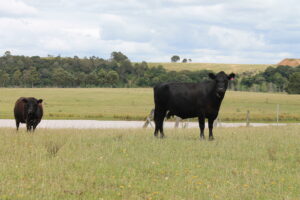After three months of relatively steady prices, the cattle market has taken a dive again in recent weeks. It’s either a supply, or demand issue, or possibly both. Here we go looking for the cause, and if we’ve seen the end of the 1000¢+ Eastern Young Cattle Indicator.
The decline in cattle prices isn’t isolated to one category, all cattle prices are falling. Figure 1 shows National Feeder, Trade and Heavy Steer prices have all lost significant ground in recent weeks. While the Feeder Steer Indicator hasn’t quite breached the low seen back in July, Trade Steers well and truly have.
The Heavy Steer Indicator has been afflicted by low volumes, and as such volatility, but recently numbers have risen, and given way to a price decline.
With cattle prices, demand declines at the export end will flow through to finished cattle, both grass and grainfed, which then impacts feeders and as such young cattle prices. We’ll know how November export volumes performed in a few days, but until then we have to go off prices.
Figure 2 shows the EYCI and the 90CL Frozen Cow to the US. Frozen 90CL is a major beef export for Australia, and issues with demand at the cheaper end of the market will often show up in the 90CL price.
Steiner are reporting lacklustre demand for Australian beef from the US at the moment, driven in part by lower domestic prices. Figure 2 shows that 90CL prices have fallen in recent weeks, and importantly, that the EYCI is still at a strong premium.
Figure 3 shows how cattle slaughter and the EYCI premium or discount to the 90CL have had a strong relationship over the past 20 years. The last two years of tight slaughter numbers has seen a hefty premium for the EYCI. However, increasing supply will no doubt see the EYCI return to a smaller premium, as processors claw back some margin.
What does it mean?
With an increasing herd comes stronger young cattle supply. Late spring is often a heavy turnoff period, and we might just be seeing a return to more normal pricing spreads between export values and cattle prices.
Things like demand issues out of China could be exacerbating the current fall, but it might just be the correction we had to have
Have any questions or comments?
Key Points
- Cattle prices have fallen heavily in recent weeks, with all categories losing ground.
- Export beef prices have eased with weakening US demand, but the EYCI remains at a premium.
- Cattle prices remained at a very high price, and with increased supply were destined to fall.
Click on figure to expand
Click on figure to expand
Data sources: MLA, Steiner
Photo Credit: Tania Baker “Moovin’ On through”















